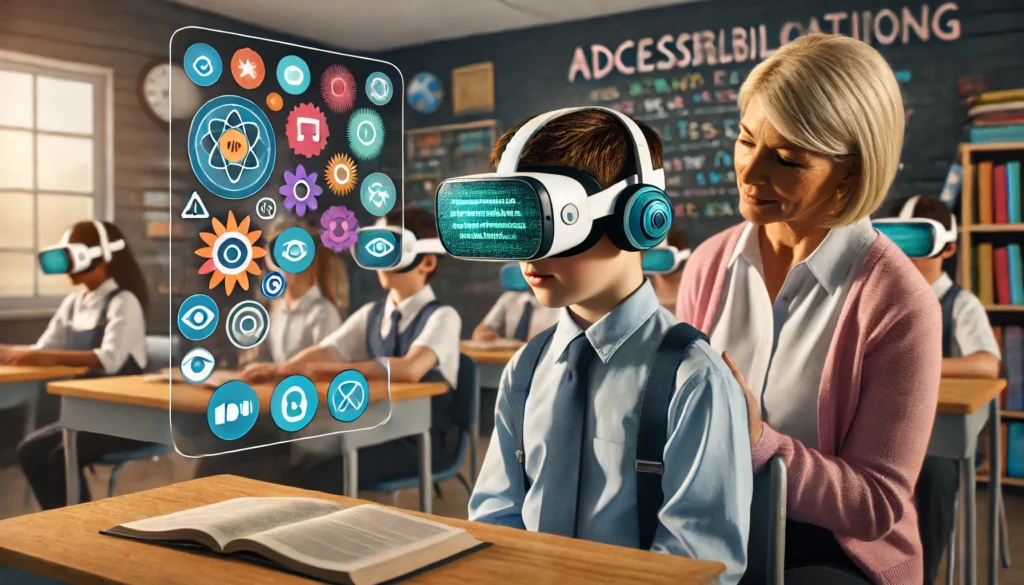/ Nov 21, 2024

Beyond the Headset: How Educational VR Can Enhance the Learning Experience for Students with Special Needs
Virtual Reality (VR) technology has been transforming the way we learn and interact with information. While VR is often associated with gaming and entertainment, its potential to enhance the learning experience for students with special needs has only begun to be explored. As the technology continues to evolve, it’s clear that educational VR can have a profound impact on the way students with special needs learn and engage with complex subjects.
Inclusive Learning Environment
Traditional educational settings can be challenging for students with special needs, who often face significant barriers to accessing information and participating in class. Visual and audio sensitivities, processing issues, and physical limitations can make it difficult for these students to learn in the same way as their peers. Educational VR can help bridge this gap by providing an inclusive and adaptable learning environment that caters to individual needs.
Personalization
One of the most significant benefits of educational VR is its ability to offer personalized learning experiences. By using VR, educators can create customized lessons that cater to a student’s unique learning style, pace, and abilities. This personalized approach can help students with special needs build confidence, stay engaged, and make connections with complex concepts.
Accessibility Features
VR headsets have built-in features that cater to students with special needs, such as:
Engagement and Motivation
VR experiences can be incredibly engaging, making them an effective way to motivate students with special needs. Interactive 3D simulations, gamification, and immersive narratives can:
Real-World Applications
Educational VR is already being used in various settings, including:
Challenges and Future Directions
While educational VR holds immense potential, there are still challenges to overcome, such as:
Conclusion
Educational VR has the potential to revolutionize learning for students with special needs. By providing personalized, inclusive, and engaging experiences, VR can help close the gap between students with and without special needs. As VR technology continues to evolve, it’s essential for educators, policymakers, and tech developers to prioritize accessibility, training, and content development to ensure that VR is available to all students who can benefit from its transformative power. As we move beyond the headset, we can look forward to witnessing the profound impact that educational VR can have on the lives of students with special needs.